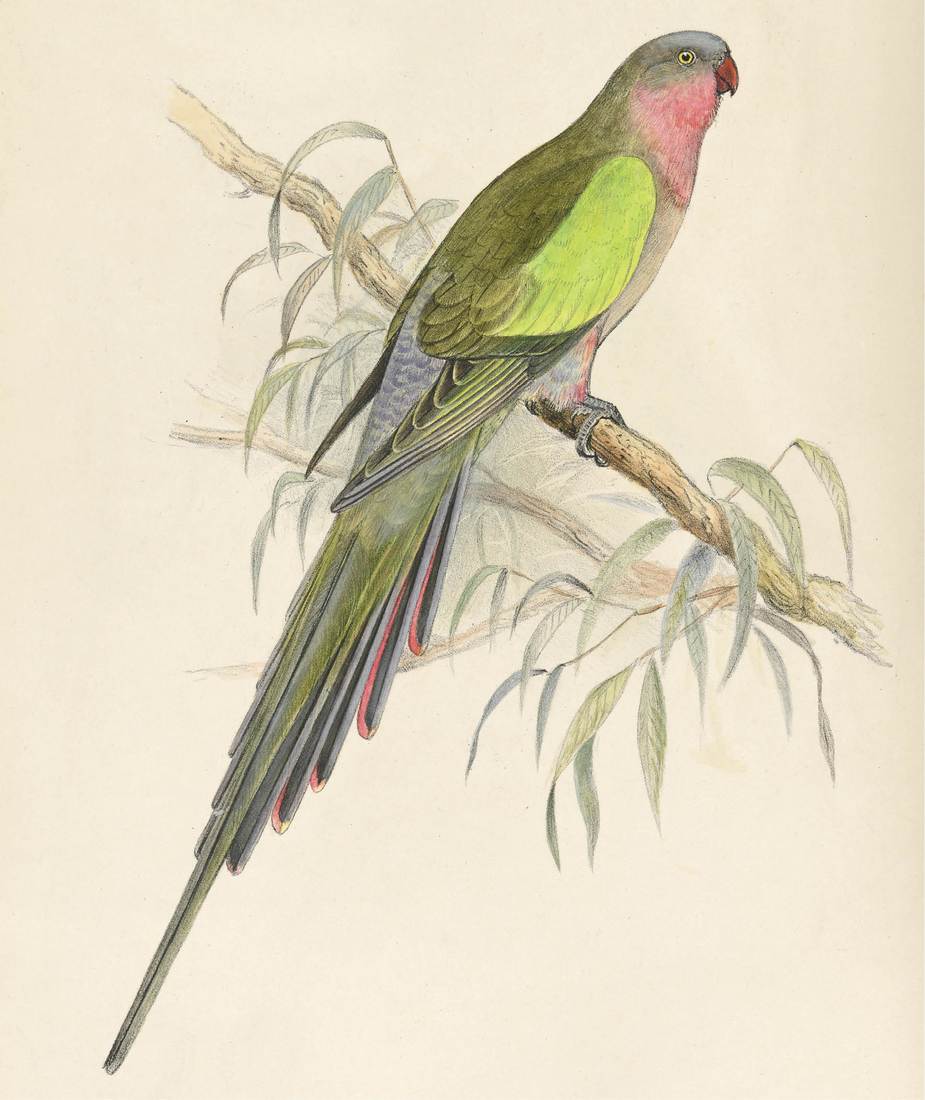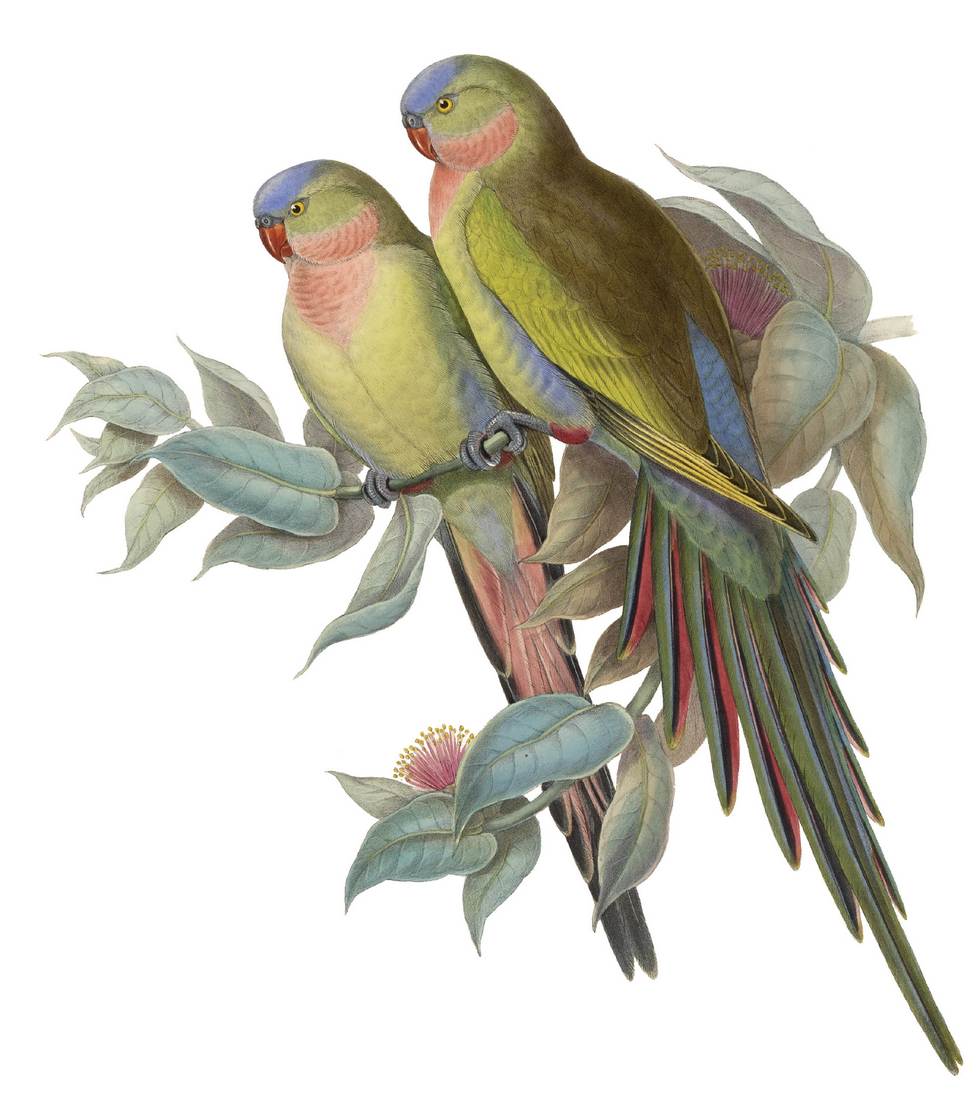Princess Parrot
Polytelis alexandrae
John Gould was the first to describe the species, in 1863.
Polytelis is derived from the Greek poluteles (extravagant or lavish); alexandrae honours Princess Alexandra, daughter of the King of Denmark, who married the Prince of Wales the year that the bird was named.

Neville W. Cayley, Princess Parrakeet (Northipsitta alexandrae) 1930s
(adult female, top; adult male, centre; immature, bottom)
Author’s note: The main difference between the adult male and adult female is the length of the tail, the female’s being shorter. The female and immature are also slightly duller than the male.

Roland Green, Northipsitta alexandrae (Alexandrine Parrot) 1916–1917 (adult male)
Author’s note: Old names can be confusing; some species have been through several official name changes plus a few that were never accepted. Northipsitta was one of several new names coined by Gregory Mathews, many honouring his friends and colleagues, in this case Alfred John North of the Australian Museum. In 1895, North had erected a new genus for the Princess Parrot, Spathopterus, but Mathews realised that Spathoptera was already applied to a genus of beetles and, in 1912, replaced it with Northipsitta, North’s Parrot. However, Gould’s original name stands because of precedence and his accepted placement of the parrot in a genus (Polytelis) with the Regent Parrot and the Superb Parrot.

John Gould (artist), Henry Constantine Richter (lithographer), Polytelis alexandrae (The Princess of Wales’s Parrakeet) 1869
(adult female, left; adult male, right)
Author’s note: Gould’s and Richter’s illustration is the first published of the species.
Explorer, soldier and wealthy racehorse owner Captain Samuel Albert White wrote of the Princess Parrot: ‘Although I have travelled thousands of miles in search of these parrots in the interior, I have never had the good fortune to meet with them. I searched their old haunts in 1913 and again in 1914, yet in 1915 they came to those very localities in great numbers’. They remain elusive and sought after by birdwatchers, apparently arriving to breed near water on the infrequent occasions that conditions are good, particularly when spinifex is ripening in abundance.




